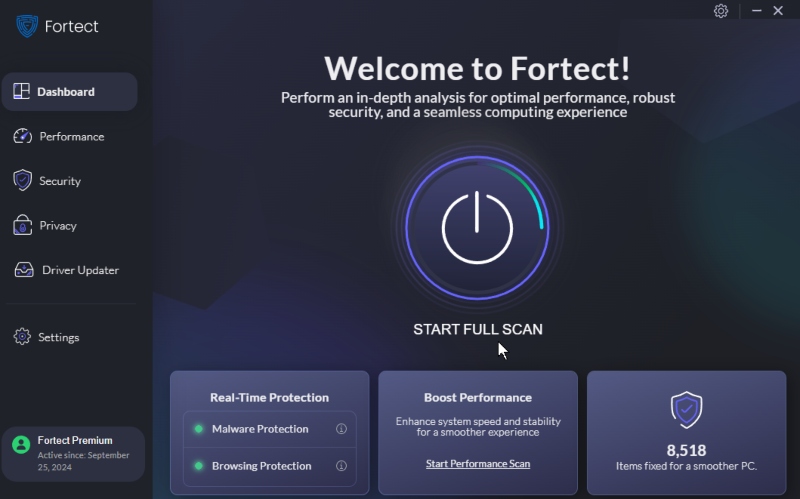How to Fix Protection Definition Update Failed on Windows 10
Many Windows users now consider Windows Defender a reliable security tool. However, it has flaws, and users often encounter errors.
Windows Defender typically receives automatic definition updates on Windows 10. A familiar issue users report is the error message “Protection Definition Update Failed” during these updates.
These problems can arise from outdated or corrupt Windows Defender files, malware, incorrect Windows update settings, and interference from other security software. Also, network connectivity issues and residual files from previously installed third-party antivirus programs can prevent Windows Defender from updating correctly.
FIX: Windows Defender Protection Definition Update Failed

When Windows Defender fails to update its protection definitions, several troubleshooting methods can help resolve the issue.
Here are three practical approaches:
Delete Temporary Files
Over time, your system accumulates temporary files that can interfere with various processes, including Windows Defender updates. Clearing these files can often resolve update issues and improve overall system performance.
Follow these steps to remove temporary files:
- To access the Run dialog quickly, use this keyboard shortcut: Press the Windows key + R to open the Run dialog.

- Access the temporary files folder with this command: Type “%temp%” (without quotes) and press Enter.
- Prepare to remove all temporary files: Select all files in the opened folder.
- Remove the selected files: Delete the selected files.
- Complete the cleanup process: Empty the Recycle Bin to remove the deleted files permanently.
Reset PC
If the issue persists after trying more straightforward solutions, a PC reset can be an effective, albeit more drastic, measure. This process reinstalls Windows while allowing you to keep your files.
Here’s how to initiate a reset:
- Navigate to the reset options in Windows Settings: Go to Settings > Update & Security > Recovery.
- Begin reset: Under “Reset this PC,” click “Get started.”
- Choose your preferred reset option: Decide whether to keep your files or remove everything.
- Complete the reset: Follow the on-screen instructions to complete the reset process.
Scan Your PC for Malware
Malware infections can interfere with Windows Defender’s functionality, including its ability to update. Performing a full system scan for malware can detect and remove any malicious software causing the issue.
Here’s how to run a scan:
- Access Windows Security: Open Windows Security from your Start menu or system tray.
- Navigate to the scanning options. Click on “Virus & threat protection.”
- Choose the scan type: Select “Scan options.”
- Initiate a comprehensive scan: Choose “Full scan” and click “Scan now.”
- Allow the scan to complete: Wait for the scan to finish and follow any recommendations provided.
While Windows offers built-in security features, many users enhance their protection with third-party solutions. Consider using Fortect, an all-in-one PC solution with extensive security suites that often provide additional layers of defense against various threats, including advanced malware.

Fortect has real-time malware protection that also scans your PC for possible threats and reasons why you’re getting this Protection Definition Update Failed on Windows 10 error. Once it has done so, it will identify and fix the issue, revitalizing your computer’s performance in no time.
Download and Install Fortect now.
Restart the Windows Defender Program
When Windows Defender encounters update issues, restarting its service can often resolve the problem. This process clears any temporary glitches or stuck processes preventing updates. Restarting the service gives Windows Defender a fresh start, allowing it to re-establish connections and retry the update process with a clean slate.
To restart the Windows Defender service, follow these steps:
- Access the Windows Services manager: Press Windows key + R, type “services.msc” and press Enter.
- Find the relevant service: Locate “Windows Defender Antivirus Service” in the list.
- Initiate the restart: Right-click on the service and select “Restart.”
- Attempt the update again: Once the service has restarted, update Windows Defender.
Manually Update Windows Defender
Windows Defender typically updates its definitions daily via Windows Update. If you encounter an update failure, you can manually install the latest definitions:
Determine if your Windows 10 is 32-bit or 64-bit.
- Download the appropriate installer from Microsoft’s official site.
- Locate the downloaded file (usually named mpam-fe.exe) in your download folder.
- Double-click to run and follow the installation prompts.
This method bypasses automatic updates, ensuring your system has the most recent protection.
Run SFC Scan via CMD
System file corruption can be a root cause of Windows Defender’s inability to update its protection definitions. You can utilize the System File Checker (SFC) tool to address this. This built-in utility examines all protected system files, identifying any missing or damaged files; it attempts to restore them to their proper state, potentially resolving the update failure issue for Windows Defender.
- Open Command Prompt as administrator.
- Type “sfc /scannow” (without quotes) and press Enter.

- Please wait for the scan to complete (it may take some time).
- Restart your computer if prompted.
Clear Software Distribution Folder Contents
As a final resort, consider initiating Safe Mode on your system. Once there, navigate to the SoftwareDistribution directory and change its name to “SoftwareDistribution.old” or remove all files. After this, reboot your device and try updating Windows Defender once more. If you rename the original folder, the system will generate a fresh SoftwareDistribution directory.




